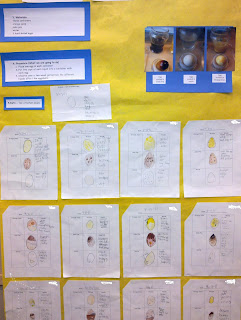



Bazemore, Suzanne. Soccer : how it works. Mankato, Minn. : Capstone Press, c2010
Biskup, Agnieszka. Football : how it works. Mankato, Minn. : Capstone Press, c2010
Biskup, Agnieszka. Hockey : how it works. Mankato, Minn. : Capstone Press, c2010
Bonnet, Robert L. Home run! : science projects with baseball and softball. Berkeley Heights, NJ : Enslow Publishers, Inc., c2010
Dreier, David Louis. Baseball : how it works. Mankato, Minn. : Capstone Press, c2010
Gardner, Robert, 1929-. Health science projects about sports performance. Berkeley Heights, NJ : Enslow Publishers, c2002
Gardner, Robert, 1929-. Science projects about the physics of sports. Springfield, NJ : Enslow Publishers, c2000
Gardner, Robert, 1929-. Slam dunk! : science projects with basketball. Berkeley Heights, NJ : Enslow Publishers, c2010
Goff, John Eric, 1970-. Gold medal physics : the science of sports. Baltimore, Md. : Johns Hopkins University Press, 2010
Goodstein, Madeline P. Goal! : science projects with soccer. Berkeley Heights, NJ : Enslow Publishers, c2010
Goodstein, Madeline P. Wheels! : science projects with bicycles, skateboards, and skates. Berkeley Heights, NJ : Enslow Publishers, c2010
Levine, Shar, 1953-. Sports science. New York : Sterling Pub., c2006
Mercer, Bobby, 1961-. The leaping, sliding, sprinting, riding science book : 50 super sports science activities. New York : Lark Books, c2006
Rowe, Julian. Sports. Crystal Lake, Ill. : Rigby Interactive Library, 1997
Slade, Suzanne. Basketball : how it works. Mankato, Minn. : Capstone Press, c2010
Sohn, Emily. Skateboarding : how it works. Mankato, Minn. : Capstone Press, c2010
Why a curveball curves : the incredible science of sports. New York : Hearst Books, c2008
Wiese, Jim, 1948-. Sports science : 40 goal-scoring, high-flying, medal-winning experiments for kids. New York : J. Wiley, c2002
Biskup, Agnieszka. Football : how it works. Mankato, Minn. : Capstone Press, c2010
Biskup, Agnieszka. Hockey : how it works. Mankato, Minn. : Capstone Press, c2010
Bonnet, Robert L. Home run! : science projects with baseball and softball. Berkeley Heights, NJ : Enslow Publishers, Inc., c2010
Dreier, David Louis. Baseball : how it works. Mankato, Minn. : Capstone Press, c2010
Gardner, Robert, 1929-. Health science projects about sports performance. Berkeley Heights, NJ : Enslow Publishers, c2002
Gardner, Robert, 1929-. Science projects about the physics of sports. Springfield, NJ : Enslow Publishers, c2000
Gardner, Robert, 1929-. Slam dunk! : science projects with basketball. Berkeley Heights, NJ : Enslow Publishers, c2010
Goff, John Eric, 1970-. Gold medal physics : the science of sports. Baltimore, Md. : Johns Hopkins University Press, 2010
Goodstein, Madeline P. Goal! : science projects with soccer. Berkeley Heights, NJ : Enslow Publishers, c2010
Goodstein, Madeline P. Wheels! : science projects with bicycles, skateboards, and skates. Berkeley Heights, NJ : Enslow Publishers, c2010
Levine, Shar, 1953-. Sports science. New York : Sterling Pub., c2006
Mercer, Bobby, 1961-. The leaping, sliding, sprinting, riding science book : 50 super sports science activities. New York : Lark Books, c2006
Rowe, Julian. Sports. Crystal Lake, Ill. : Rigby Interactive Library, 1997
Slade, Suzanne. Basketball : how it works. Mankato, Minn. : Capstone Press, c2010
Sohn, Emily. Skateboarding : how it works. Mankato, Minn. : Capstone Press, c2010
Why a curveball curves : the incredible science of sports. New York : Hearst Books, c2008
Wiese, Jim, 1948-. Sports science : 40 goal-scoring, high-flying, medal-winning experiments for kids. New York : J. Wiley, c2002










